Armored vehicles of Yugoslavia. Part of 6. Wars in the ruins. Bosnia and Herzegovina. Kosovo. Macedonia
No sooner had the shots died down in Croatia, as the flames of civil war flared up in neighboring Bosnia and Herzegovina.
Historically, in this Yugoslav republic, as in a cauldron, the most diverse nations and nationalities, confessing to everything else different religions, mixed up. In 1991, Muslim Bosnians lived there (in fact, the same Serbs, who converted to Islam under the Turks) - 44 percent of the population, Serbs proper - 32 percent and Croats - 24 percent. “God forbid, Bosnia will blow up,” many people in Yugoslavia repeated during the clashes in Slovenia and Croatia, hoping that, perhaps, they would carry it. However, the worst assumptions have come true: since the spring of 1992, Bosnia has become the scene of fierce fighting, which Europe has not seen since the Second World War.
The chronology of this bloody conflict is as follows. Back in October, 1991, the national assembly proclaimed its sovereignty and announced its withdrawal from the SFRY. 29 February 1992, on the recommendation of the European Union (EU), was held a referendum on state independence of the republic, which was boycotted by the local Serbs. Immediately after the referendum, an event occurred in the capital of the Republic of Sarajevo, which can be considered as a starting point for the outbreak of war. 1 March 1992 of the year in front of the Orthodox Church masked men shot at a Serbian wedding procession. The groom's father was killed, several people were injured. The attackers disappeared (their identities have not been established so far). Barricades appeared on the streets of the city.
The United States and the EU poured oil on fire by adopting 10 in March 1992, a joint Declaration on the positive consideration of the recognition of the independence of Bosnia and Herzegovina, and within the existing administrative boundaries. Although it was already clear to everyone that a united Bosnia and Herzegovina is no longer out of the question, disengagement according to ethnic principle is the only way to avoid war. However, the Muslim leader Aliya Izetbegovic, a former soldier of the SS "Handshar" division, defending the concept of a unified Muslim state, openly admitted that he was sacrificing peace for the sake of independence.
4 April 1992, Izetbegovic announced in Sarajevo the mobilization of all policemen and reservists, with the result that Serbian leaders called on the Serbs to leave the city. 6 April 1992 The Republic of Bosnia and Herzegovina, led by Aliya Izetbegovic, was officially recognized by the West. On the same day, armed clashes began in Bosnia between representatives of the main national-religious groups: Croats, Muslims and Serbs. The Serbian response to Muslims and the West was the creation of the Republika Srpska. It happened 7 on April 1992 of the year in the village of Pale, near Sarajevo. Very soon, Sarajevo itself was blocked by Serbian armed units.
It would seem that for a time the dying up civil war in Yugoslavia broke out with renewed vigor, since there was more than enough "combustible material" for it in the republic. In the SFRY of Bosnia, the role of a kind of "citadel" was assigned, up to 60 percent of the military industry was concentrated here, simply huge reserves of various military property were located. Events around the UNA garrisons in the republic began to develop according to the scenario already run-in in Slovenia and Croatia. They were immediately blocked, and on April 27, 1992, the leadership of Bosnia and Herzegovina demanded the withdrawal of the army from Bosnia or its transfer under the civilian control of the republic. The situation was deadlock and it was only possible to resolve it on May 3, when Izetbegovic who was returning from Portugal was detained by UNA officers at the Sarajevo airport. The condition for his release was to ensure the unhindered exit of military units from the blocked barracks. Despite the promise of Izetbegovic, Muslim militants did not comply with the agreements concluded and UNA columns leaving the republic were fired upon. In one of these attacks, Muslim militants managed to capture the first 19 T-34-85 tanks Bosnian army.
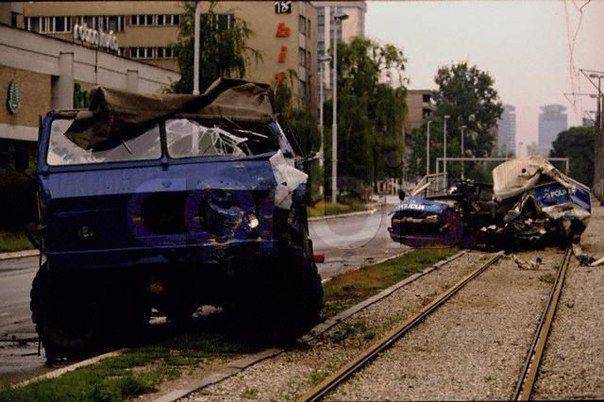
The Yugoslav People's Army officially left Bosnia and Herzegovina 12 on May 1992, shortly after the country's independence was declared in April. However, many of the senior officers of the JNA (including Ratko Mladić) went to serve in the newly created Armed Forces of the Republika Srpska. The JNA soldiers, who were from BiH, were also sent to serve in the Bosnian Serb army.
YNA transferred to the army of Bosnian Serbs 73 modern tank M-84 - 73, T-204, T-55, T-34-85, 5, T-76, 118, BMN M-80, 84 amphibious tank systems. 60PC / PU, 19 wheeled APC BOV-VP, a number of BRDM-50, 23 2-mm self-propelled howitzers 24X122 "Carnation", 2 SAU M-1 "Halket", 7 SAU M-18 weapons and military equipment.
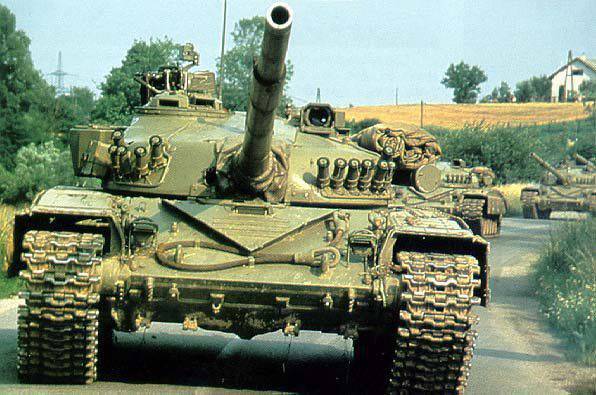
At the same time, the armies of their opponents sorely lacked heavy weapons. This was especially true of Bosnian Muslims, who had virtually no tanks and heavy weapons. Croatia, which also sent its military units to participate in the war, helped the Croats who had created their Republic of Herceg-Bosna with arms and military equipment. In total, according to Western data, the Croats entered Bosnia around 100 tanks, mainly T-55. It is quite obvious that they could not capture such a number of cars from the JNA. Most likely, here we can speak already about the supply of a certain number of combat vehicles to the zone of armed conflict. There is evidence that from the arsenals of the former GDR army.
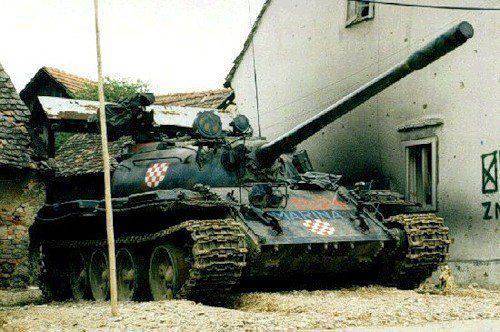
Having received such a large amount of heavy weapons, the Serbs launched a large-scale offensive, capturing 70% of the territory of Bosnia and Herzegovina. One of the first major battles was the attack of Bosnian positions near the town of Bosanski Brod. It was attended by 1,5 thousand Serbs with the support of 16 tanks T-55 and M-84.
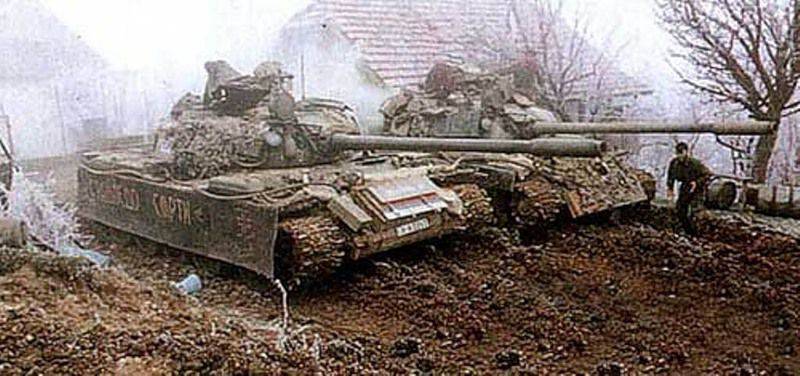
Sarajevo was surrounded and besieged. And on the side of the Serbs were Muslim groups of autonomists Fikret Abdic.
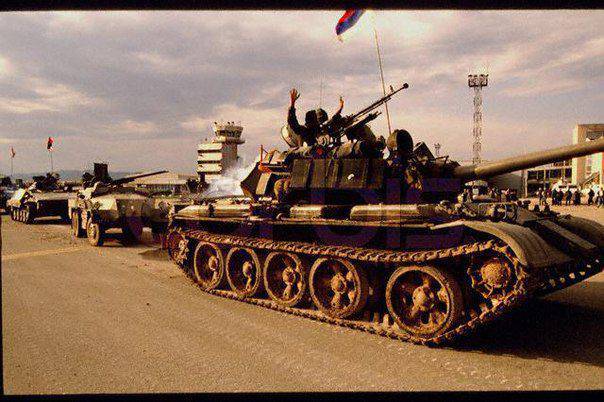
In 1993, there were no major changes at the front against the Serbian army. However, at this time the Bosnians began a fierce conflict with the Bosnian Croats in Central Bosnia and Herzegovina.
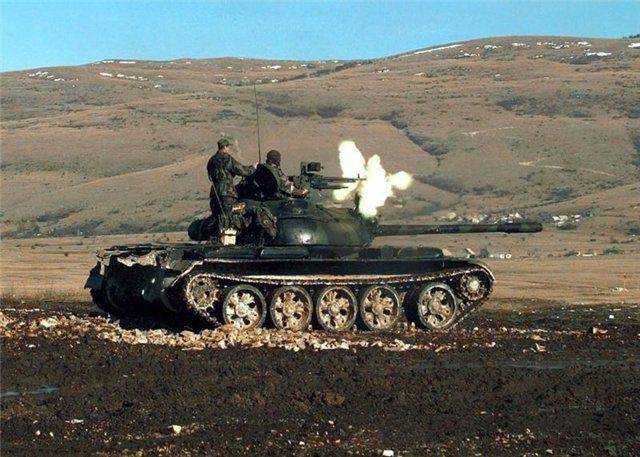
The Croatian Defense Council (HVO) began active hostilities against the Bosnians in order to capture areas in Central Bosnia that were under Muslim control. Fierce fighting in central Bosnia, the siege of Mostar and ethnic cleansing took place almost the entire year. The army of Bosnia at that time fought hard with the units of the Croatian Herceg-Bosna and the army of Croatia (which supported the Bosnian Croats). However, in these battles, Muslims managed to seize a number of heavy weapons from the Croats, including X-NUMX M-13 tanks.
This time was the hardest for the Bosnian army. Surrounded on all sides by enemy Serb and Croat forces, the Bosnian army controlled only the central regions of the country. This isolation had a strong impact on the supply. weapons and ammunition. In the 1994 year, the Washington Agreement was concluded, which concluded the Bosnian-Croatian standoff. Since then, the Bosnian army and the HVO waged a joint struggle against the Bosnian Serb army.
After the end of the war with the Croats, the Bosnian army gained a new ally in the war against the Serbs and significantly improved its position at the front.
In 1995, Muslim units suffered a series of defeats in eastern Bosnia and lost the enclaves of Srebrenica and Zepa. However, in Western Bosnia, with the help of the Croatian army, units of the HVO and aviation NATO (which intervened in the Bosnian war on the side of the Muslim-Croatian alliance) Muslims conducted a series of successful operations against the Serbs.
The armies of Bosnia and Croatia captured large territories in Western Bosnia, destroyed Serbian Krajina and rebellious Western Bosnia, and created a serious threat to Banja Luka. The year 1995 was marked by successful Bosniak operations in Western Bosnia against Serbs and Muslim autonomists. In the 1995 year after NATO’s intervention in the conflict, the Dayton Accords were signed in Srebrenica, ending the Bosnian war.
By the end of the war tank fleet of the Muslim-Croat federation consisted of: 3 captured Serbs M-84, 60-55 T, T-46 34-85, 13 M-47, 1-76 PT, BRDM-3 2, 10 less ZSU- 57-2, near 5 ZSU M-53 / 59 "Prague", most of them captured in the battles of the Serbs or sent from Croatia.
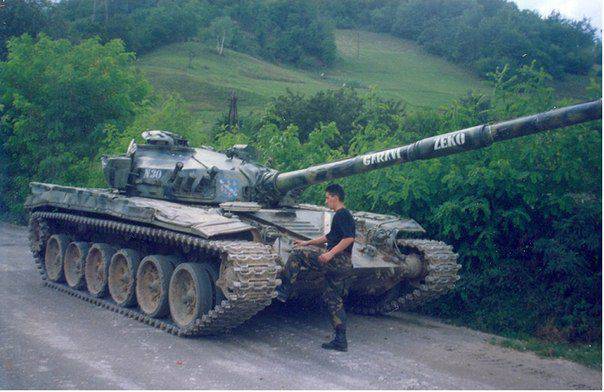
It is worth noting that in the war in Bosnia armored vehicles were used very limitedly, there were no serious tank battles. The tanks were mainly used as mobile firing points for infantry support. All this made it possible to successfully use even such outdated models as the T-34-85, M-47, SAU M-18 "Helkat" and M-36 "Jackson".
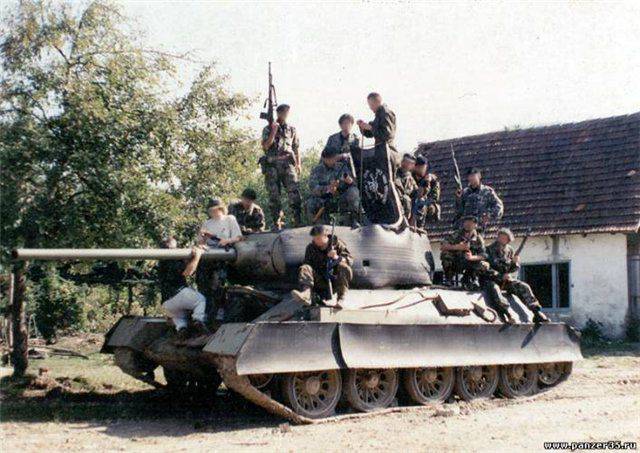
The main adversary of the armored vehicles were various ATGMs and RPGs, for which additional reservations and various home-made anti-cumulative screens made of various improvised means, such as rubber, tires and sandbags, were used to protect them.
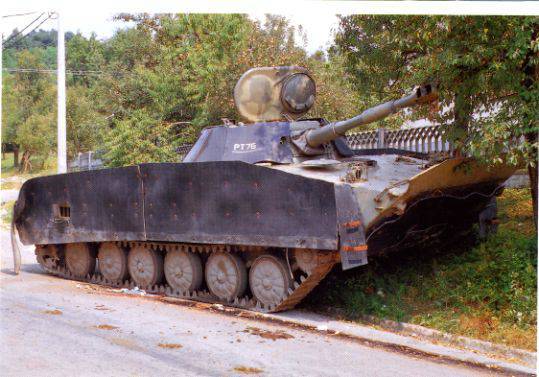
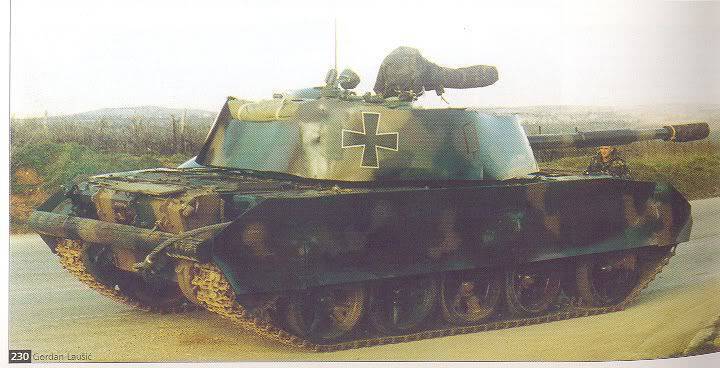
In such conditions, the ZSU steel used for the destruction of infantry and light fortifications were the most effective weapons systems: ZSU-57-2, and especially M-53 / 59 Prague with its two 30-mm guns. Cases have repeatedly been noted that even her first shots with the characteristic doo-doo-doo were enough to stop the enemy’s attack.
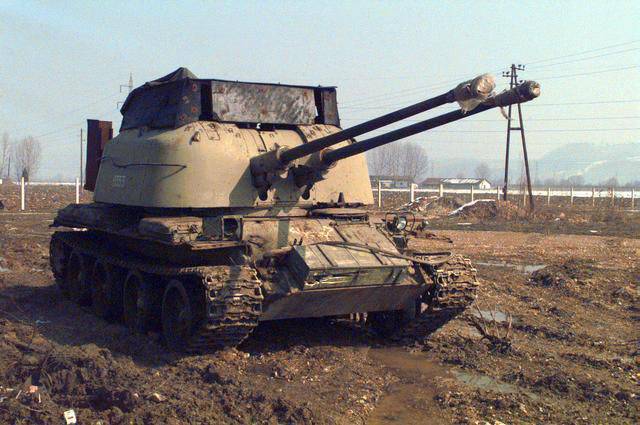
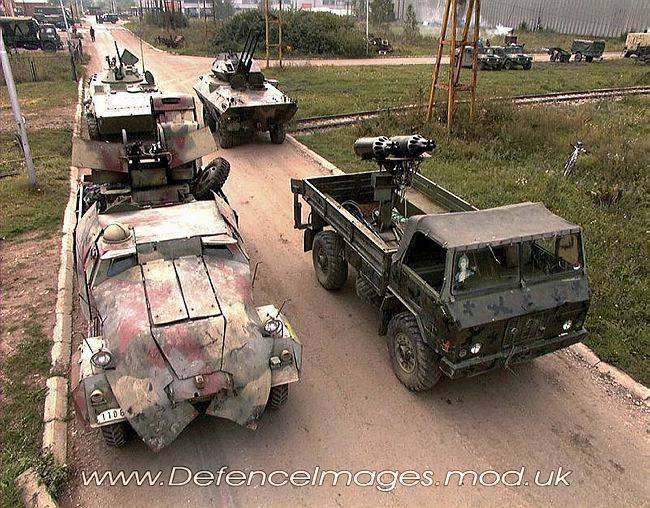
The lack of heavy machinery forced both sides to create and use a variety of hybrids: for example, this Bosnian self-propelled So-76 self-propelled gun with the American Helicopter M-18 "Helkat" turret with a 76-mm gun on the T-55 chassis.
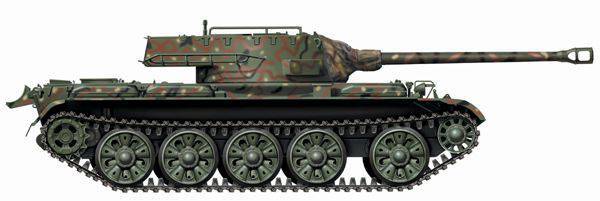
Or this Serbian T-55 with an open-mounted 40-mm Bofors anti-aircraft gun in place of the turret.
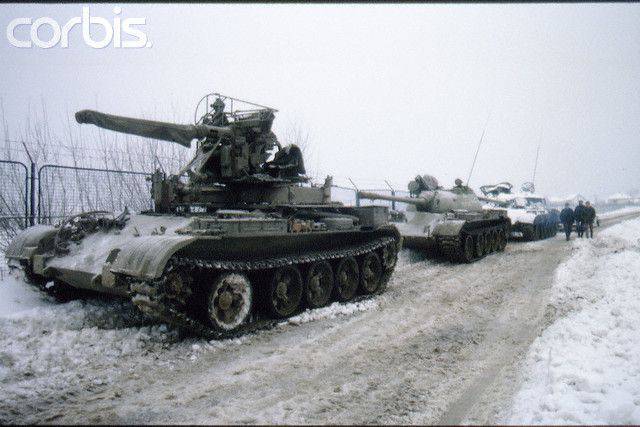
American armored car M-8 "Greyhound" with a tower of the Yugoslav BMP M-80 with a 20-mm gun of the army of the Muslim-Croatian federation.
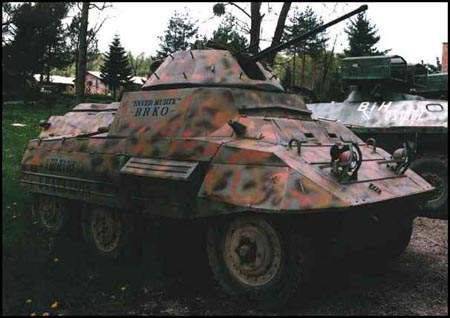
The Bosnian war was probably the last war in which an armored train, called the Krajina Express, was used in hostilities. It was created by Krajinsky Serbs in the Knin railway depot in the summer of 1991, and was successfully used until 1995, while in August, 1995, during the Croatian operation “Storm”, was not surrounded and was derailed by its own crew.
The armored train included:
- anti-tank self-propelled artillery installation M18;
- 20-mm and 40-mm anti-aircraft guns;
- Launcher 57-mm missiles;
- 82-mm mortar;
- 76-mm gun ZIS-3.
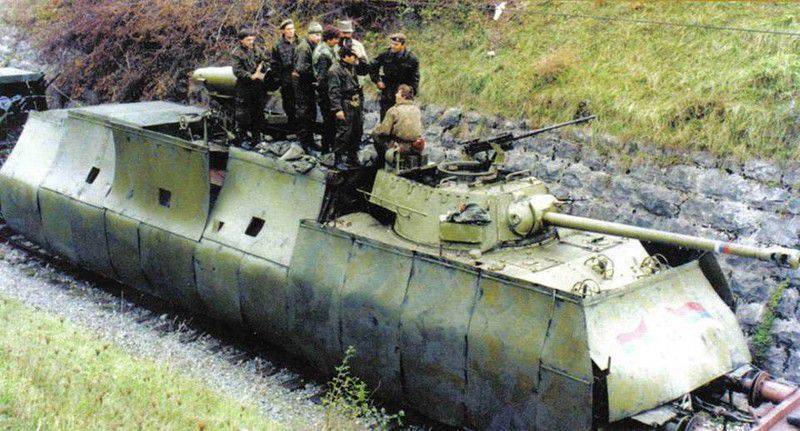
Kosovo War (1998-1999)
27 April 1992 was established by the Federal Republic of Yugoslavia (FRY), which included two republics: Serbia and Montenegro. The newly created armed forces of the FRY received the bulk of the heavy weapons of the JNA.
On arms of the armed forces of the FRY consisted of: 233 M-84, 63 T-72, 727 T-55, 422 T-34-85, 203 American 90-mm self-propelled guns M-36 "Jackson", 533 BMP M 80A, 145 BTR M-60P, 102 BTR-50PK and PU, 57 wheeled BTR-BOV-VP, 38 BRDM-2, 84 self-propelled ATGM BOV-1.
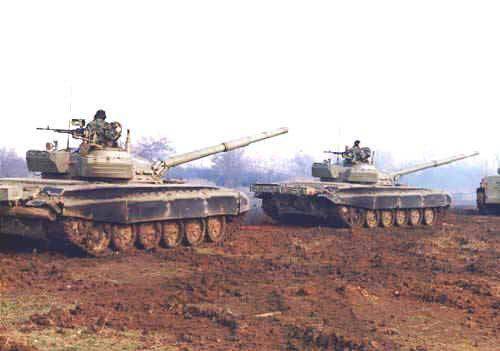
In the 1995 year, after the signing of the Dayton Accords, an order was received to reduce offensive weapons in accordance with regional quotas, which were determined by the United States and the United Nations. For the Thirty-Fours of the Yugoslav Army, this was tantamount to a sentence — the 10 tanks of the tank battalions went to the smelter. However, the number of modern M-84s has increased, some of which were transferred to the FRY by the Bosnian Serbs in order to avoid their transfer to NATO forces.
The obsolete armored personnel carriers M60P were handed over to the police, and some were destroyed.
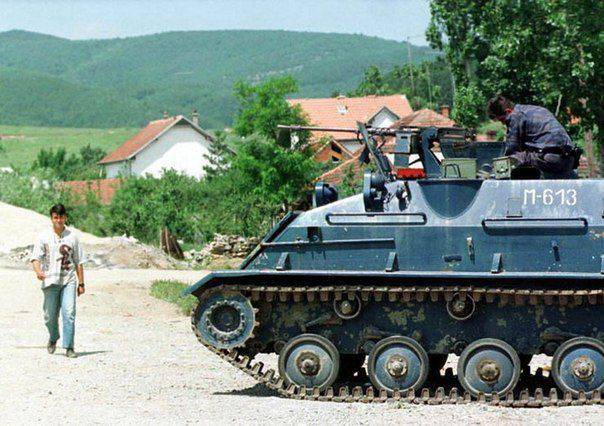
The West did not like even the existence of such a “small” Yugoslavia. A bet was made on Albanians living in the Serbian province of Kosovo. 28 February 1998, the Kosovo Liberation Army (KLA) proclaimed the beginning of an armed struggle against the Serbs. Thanks to the unrest in Albania in 1997, Kosovo has poured in a stream of weapons from the plundered warehouses of the Albanian army, including anti-tank: such as RPG "Type 69" (Chinese copy of RPG-7).
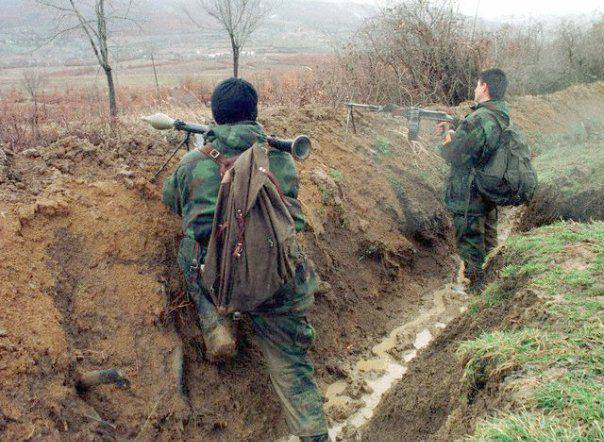
The Serbs reacted promptly: additional police forces with armored vehicles were deployed to the region, which launched a counter-terrorist struggle.
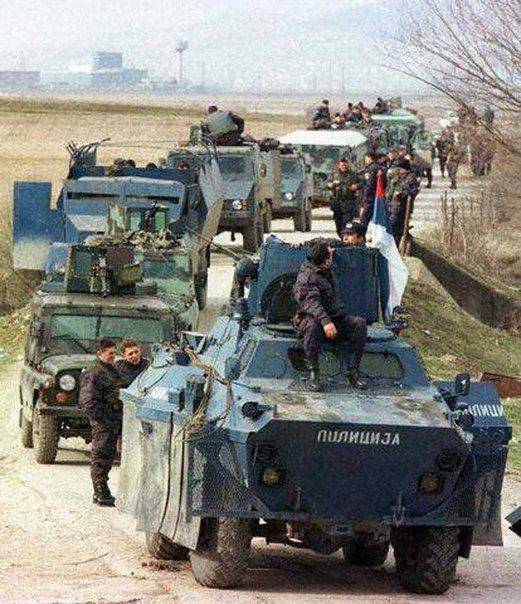
Light armored cars based on UAZs took an active part in the fighting by the Serbian police.
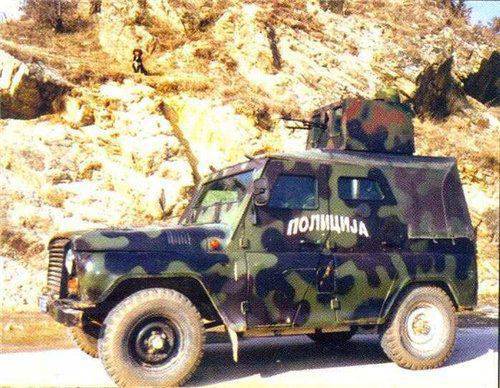
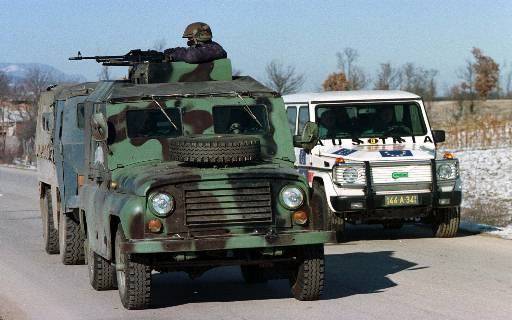
Created and homemade armored cars, for example, based on the standard army truck TAM-150.
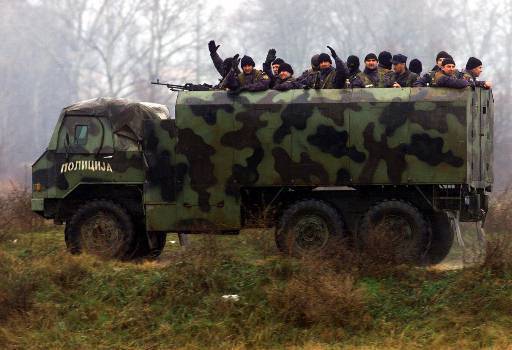
However, the army soon came to the aid of the police, providing heavy weapons.
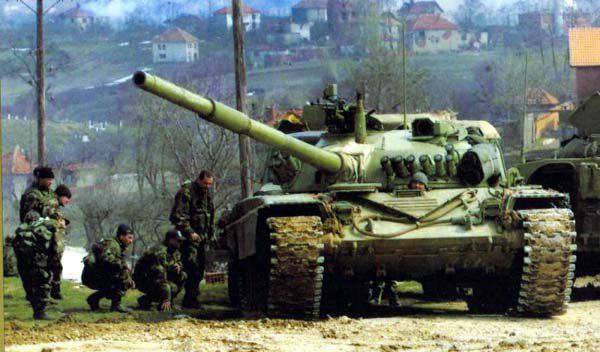
During the battles, ZSU M-53 / 59 "Prague" recommended themselves again.
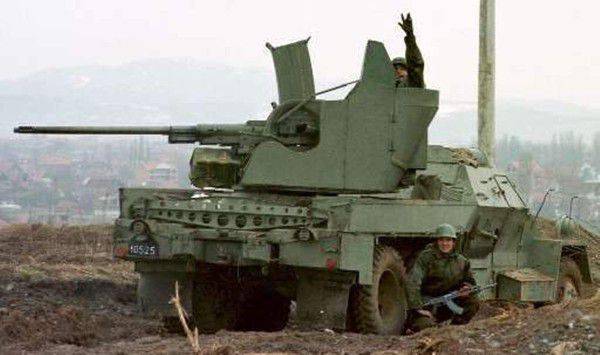
By the beginning of 1999, by joint efforts of the Serbian army and the police, the main Albanian terrorist gangs had been destroyed or driven into Albania. However, unfortunately, the Serbs did not manage to fully control the border with Albania, from where the flow of weapons continued.
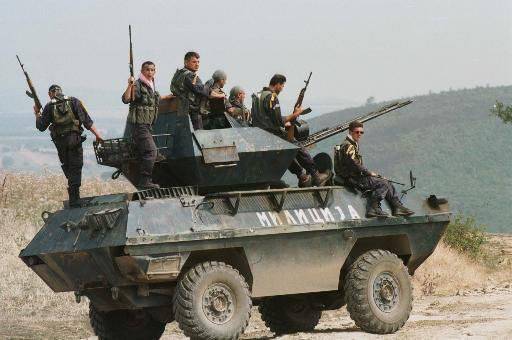
ZOV BOV-3 Serb police during operation in Kosovo, 1999 year
The West did not like this state of affairs and a decision was made about a military operation. The reason for it was the so-called. 15 "incident in Racak" on January 1999 of the year where a battle took place between the Serbian police and Albanian separatists. All those killed during the battle, both Serbs and terrorists, were declared "civilians shot by the bloodthirsty Serbian military." From that moment, NATO began to prepare for a military operation ..
In turn, the Serbian generals were also preparing for war. The equipment was camouflaged, false positions were equipped, and models of military equipment were made.
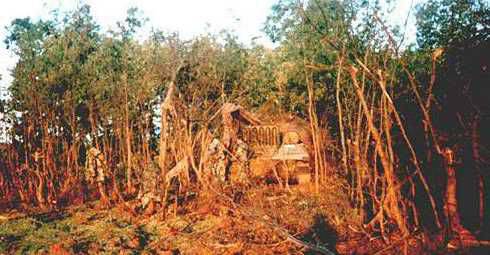
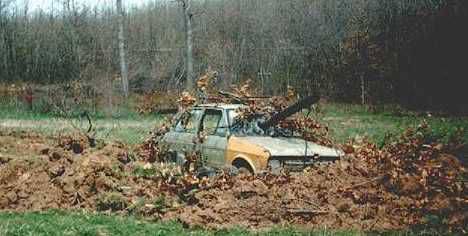
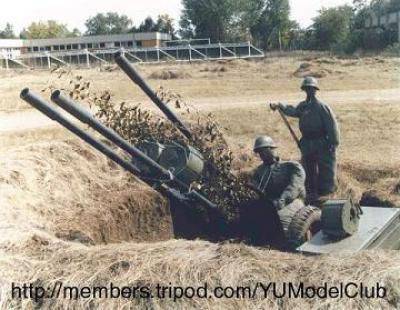
The 200 obsolete American Jacks of the M-36 Jackson, which had been set up in 50's under Tito, and the 40 Romanian TAV-71M armored personnel carriers, which were still subject to reduction according to the signed Fry Dayton agreements, were used as false targets.
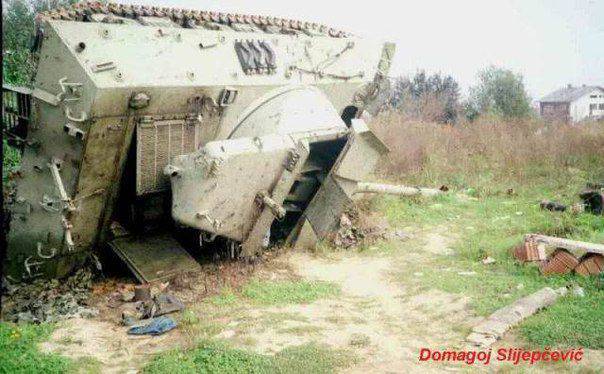
27 March NATO operation began, dubbed the "Resolute Force". Air strikes were subjected to military strategic facilities in major cities of Yugoslavia, including the capital, Belgrade, as well as numerous civilian objects, including residential ones. According to the first estimates of the US Department of Defense, the Army of Yugoslavia lost 120 tanks, 220 other armored vehicles and 450 artillery guns. The estimates of the European Command SHAPE from September 11 1999 were slightly less optimistic - 93 destroyed the tank, 153 various armored vehicles and 389 artillery guns. The American weekly Newsweek, after statements by the US military about successes, published a refutation with detailed specifications. As a result, it turned out that in some cases the losses of the Yugoslav army in NATO were overestimated tenfold. A special US commission (Allied Force Munitions Assessment Team), sent to Kosovo in 2000, found the following destroyed Yugoslav vehicles: 14 tanks, 18 armored personnel carriers, half of which were hit by Albanian RPG fighters and 20 artillery guns and mortars.
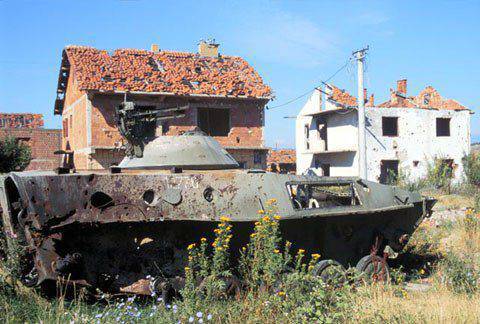
Such insignificant losses, naturally, could not reflect on the combat capability of the Serbian units, which continued to prepare to repel NATO’s ground attack. But, 3 June 1999 of the year, including under pressure from Russia, Milosevic decided to withdraw the Yugoslav troops from Kosovo. 20 June last Serbian soldier left Kosovo, which included NATO tanks.
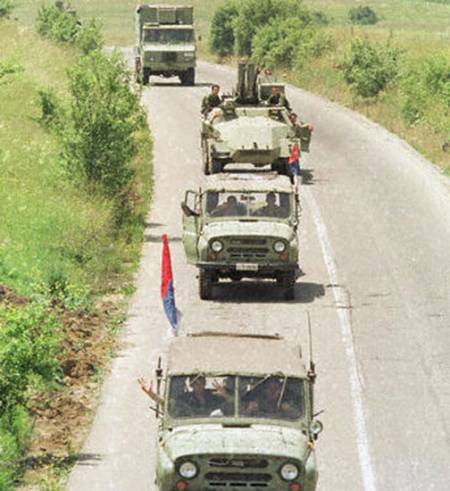
As the American general, who observed the withdrawal of Yugoslav troops, said:
"It was the undefeated army that was leaving ..."
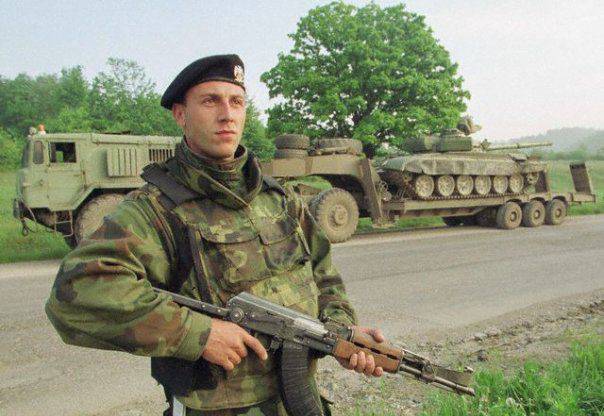
Nothing decided and throw our paratroopers in Pristina. Serbia has lost Kosovo. And as a result of the NATO-inspired street demonstrations in Belgrade on October 5, 2000, history as a “bulldozer revolution,” Milosevic was overthrown. 1 April 2001 was arrested in his villa, and 28 in June of the same year was secretly transferred to the International War Crimes Tribunal in the Former Yugoslavia in The Hague, where he died under mysterious circumstances in 2006.
But soon the conflict broke out in the Presev Valley. Albanian militants created the Preshevo, Medvedzhi and Buyanovac Liberation Army already located on the territory of Serbia directly fighting in the 5-kilometer "ground security zone" created in 1999 in the territory of Yugoslavia following the NATO War against Yugoslavia. The Serbian side had no right to keep armed formations in the NZB, except for the local police, who were allowed to have only light weapons. After the overthrow of Milosevic, the new leadership of Serbia was allowed to clean the area from Albanian gangs. From 24 to 27, in the course of Operation Bravo, Serbs of the police and special forces, with the support of army armored units, liberated the occupied territories. Albanian militants were either destroyed or went to Kosovo, where they surrendered to NATO forces.
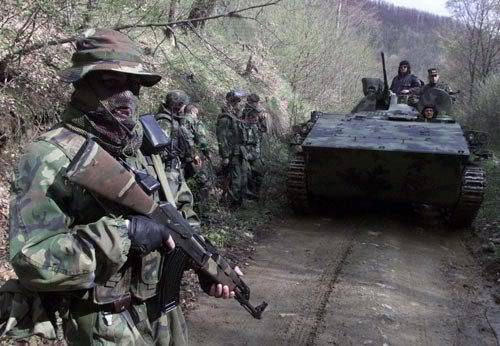
4 February The 2003 army of the FRY was transformed into the army of Serbia and Montenegro. The last Yugoslav military association essentially ceased to exist. After the referendum on the independence of Montenegro 21 May 2006, which resulted in 55,5% of voters voted for the republic to leave the union, Montenegro 3 June 2006, and Serbia 5 June 2006, declared independence. The State Union of Serbia and Montenegro split into Serbia and Montenegro, and 5 ceased to exist on June 2006.
Macedonia (2001 year)
Surprisingly, Macedonia became the only state of that period that had a “soft divorce” with Yugoslavia in March 1992. Only five T-34-85 and 10 anti-tank ACS М18 Hellet, which could only be used for personnel training, remained from the Macedonians to the Macedonians.
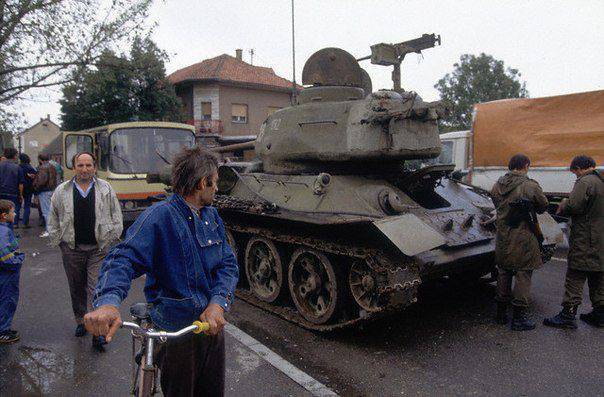
Withdrawal of JNA units from Macedonia
Since nothing else was foreseen in the near future, all tanks were put up for overhaul, and in June 1993, the army received the first combat-ready T-34-85. Over the next year, two more tanks of this type were received, which allowed the Macedonians to continue training until the supply of X-NUMX medium-sized T-100 tanks from Bulgaria in the 55 year.
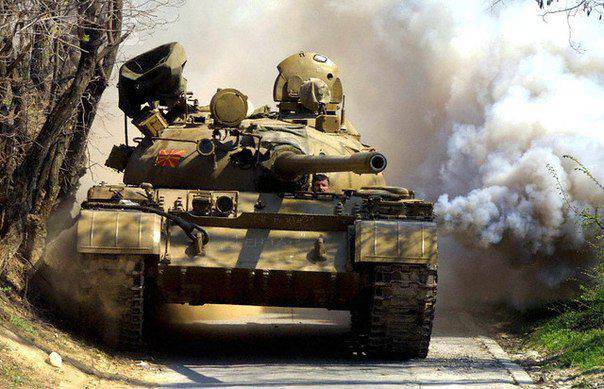
After the actions of Albanian militants in Kosovo in 1999 were crowned with success, armed units began to form in the part of Macedonia inhabited by Albanians, where weapons began to flow from Kosovo.
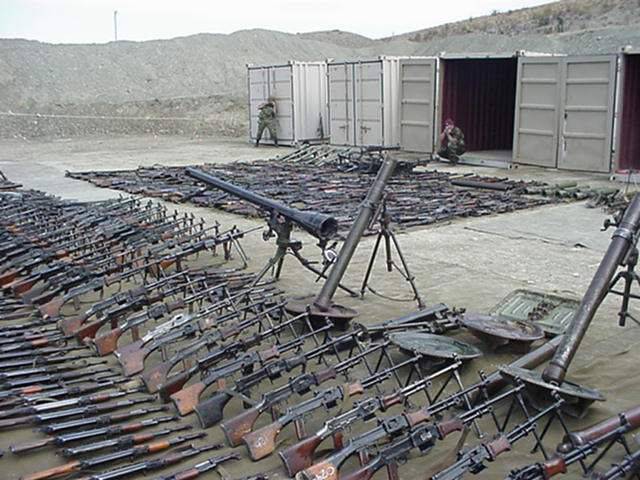
The union of these organizations was called the Army of National Liberation. In January, 2001, the militants began active operations. The Macedonian army and police attempted to disarm the Albanian detachments, but met with armed resistance. The NATO leadership condemned the actions of extremists, but refused to help the authorities of Macedonia. In the course of the armed conflict, which lasted in November 2001, the Macedonian army and police used T-55, BRDM-2, German armored personnel carriers TM-170 and BTR-70 also delivered from Germany.
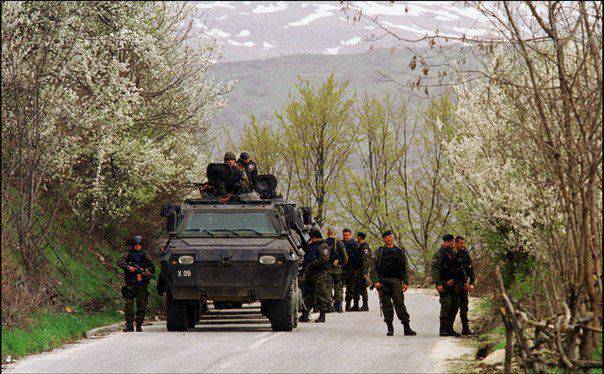
German BTR TM-170 of the Macedonian Police during an operation against Albanian militants
The Macedonian special forces actively used the 12 BTR-80 purchased in Russia.
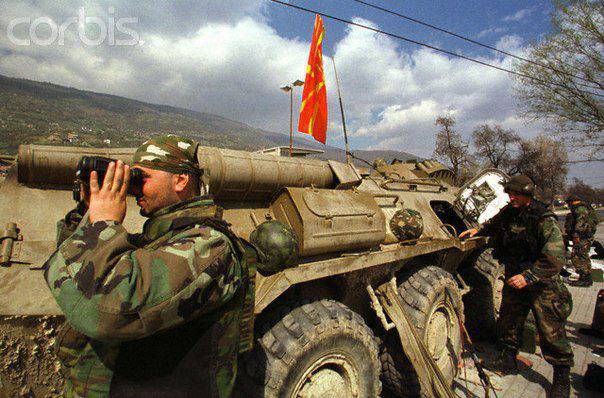
During the fighting, several Macedonian T-55, BTR-70 and TM-170 were destroyed or captured by Albanian militants.
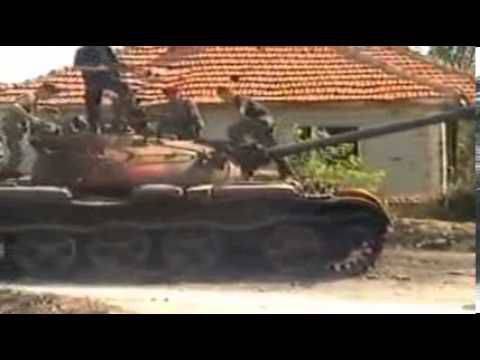
On the materials of the sites:
http://samlib.ru
http://shushpanzer-ru.livejournal.com
http://www.tankfront.ru/allies/jugoslavija/april1941.html
http://stef124.tripod.com/,
http://www.vojska.net/
http://srpsko.fastbb.ru/
http://m1kozhemyakin.livejournal.com/4580.html
The ending should ...
Information